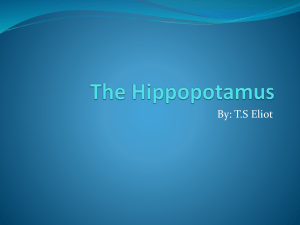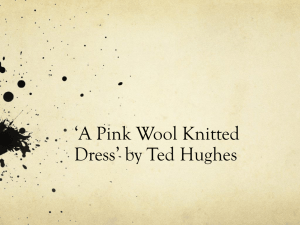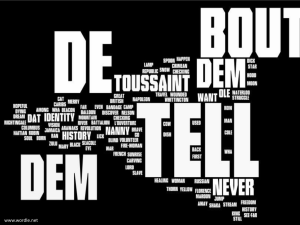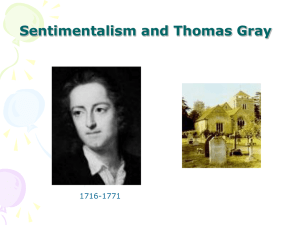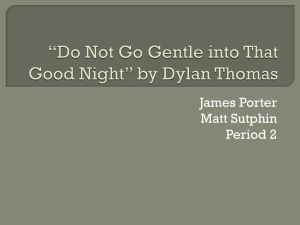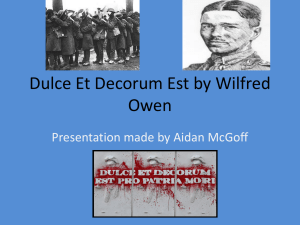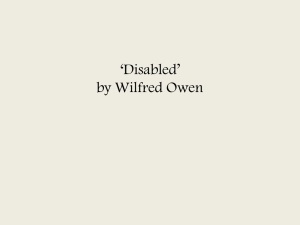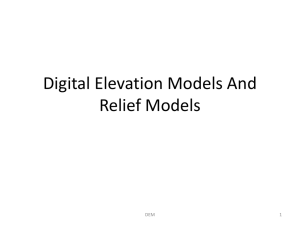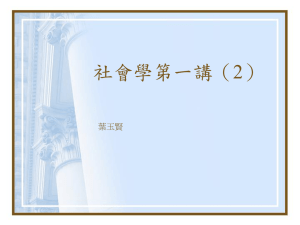Checking Out Me History File
advertisement
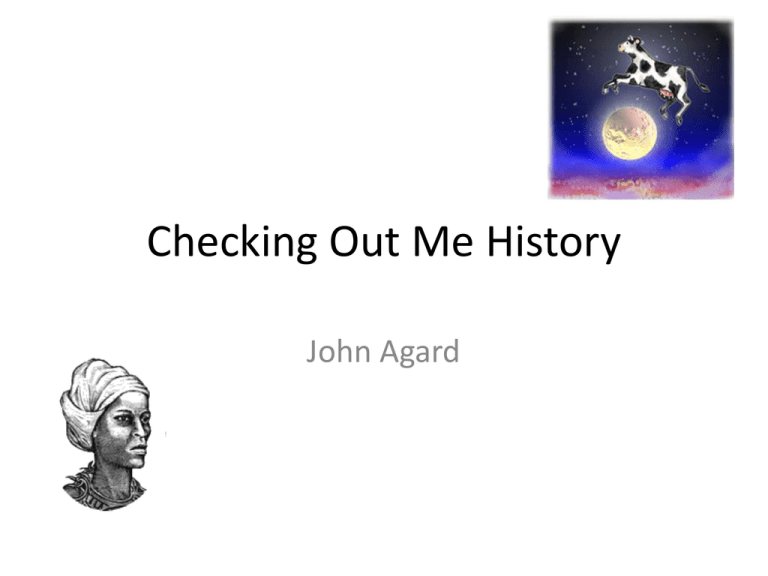
Checking Out Me History John Agard Read the poem through Important things to know… 1066 = crucial to English history as it places within the areas they had been marked the take over of English society by transported to. the French. Nanny de Maroon led the maroons to victory in Jamaica against British rule. Dick Whittington = a poor boy with nothing but a cat who became Lord Mayor of Lord Nelson = famous English admiral who London – mentioned in fairy tales and inflicted a massive defeat on the French pantomimes which meant the British Empire was strengthened. Touissant L’Ouverture = the black leader of the Haitian revolution against French The Battle of Waterloo 1815 = the final Colonial rule. He abolished slavery in Haiti defeat of the French army led by Napoleon and turned it into an independent republic which made Britain a world super power Nanny de Maroon = (Maroon is a general term used to describe black slaves who escaped from slavery and lived in remote Shaka = an influential leader of the Zulu made famous from supposedly stealing nation. He united the Zulu people against from the rich to give to the poor. other tribes and the increasing presence of the white settlers Mary Seacole was a Jamaican woman who looked after soldiers in the same way that Caribs and Arawaks = the original Nightingale did – a black woman who inhabitants of the West Indies at the time made a unique contribution to our history when Columbus ‘discovered’ the islands. but has been forgotten. They were killed off by the war or through exposure to European diseases that they Crimean War = 1854-56 Russian Empire vs had no immunity to. Britain, France and the Ottoman Empire. Lots of deaths occurred from fighting bit Florence Nightingale = a famous British also from outbreaks of disease. nurse. Famous for her work in the Crimean War and her innovations in Old King Cole and The Cow Jumped Over hygiene. the Moon = nursery rhymes Robin Hood = legendary English hero What do the following mean? Dem Me Bout Dat Lick back De – See-far woman – -Them -My -About -That -Defeated -Of -A woman who has a vision of the future Brief notes about the poem • Agard is pointing out how in the English Curriculum students only seem to learn about white people because he believes it is written by white people for white people • He believes history in the English Curriculum deliberately leaves out information about black men and women who deserve more recognition Stanza one… These three words are used at the start of all the stanzas that rhyme What’s the stanza about? Dem tell me Dem tell me Wha dem want to tell me The repetition highlights the control that white people have over history Agard believes that if you control what people learn about the past, then you can control how people think and what they think about themselves Stanza two… The use of the ‘b’ creates an angry tone The alliteration on ‘b’ at the start of these lines shows that Agard believes that information has been deliberately distorted and hidden Bandage up me eye with me own history Blind me to me own identity The use of non-standard English is used to show his own culture and background which he feels is not acknowledged by the English Curriculum What’s the stanza about? Stanza three… This quatrain is repeated throughout the poem – in each one a different famous white figure is mentioned. Each quatrain usually ends with the mention of a black historical figure who isn’t taught about Dem tell me bout 1066 and all dat dem tell me bout Dick Whittington and he cat But Toussaint L’Ouverture no dem never tell me bout dat The childish rhyme shows how he feels about what he has been told about the past – this is why he mentions characters from nursery rhymes and myth – he is mocking what he has been told What’s the stanza about? Stanza four… The lines are shorter and they are written in free verse – Agard is using an unconventional form to write about unconventional ideas The use of occasional rhyme in these sections is irregular These longer verses serve to concentrate on someone famous in black history Toussaint a slave with vision lick black Napolean battalion and first Black Republic born Toussaint de thorn to de French Toussaint de beacon of de Haitian Revolution What’s the stanza about? The mocking tone is not apparent in these sections. They are italicised so that they stand out visually These section are filled with metaphor and positive imagery to convince the reader about how amazing these people are Stanza five… Note the lack of punctuation in the whole poem. Agarad is choosing to reject the rules of punctuation – the poem is therefore purposefully full of enjambment – this represents how he is rejecting white history too Dem tell me bout de man who discover de balloon and de cow who jump over de moon Dem tell me bout de dish ran away with the spoon but dem never tell me bout Nanny de maroon What’s the stanza about? Stanza six… This language is unusual and original What’s the stanza about? Nanny see-far woman of mountain dream fire-woman struggle hopeful stream to freedom river The metaphors create a positive image of Nanny What do the metaphors suggest to you about Nanny de Maroon? Stanza seven… What’s the stanza about? Dem tell me bout Lord Nelson and Waterloo but dem never tell me bout Shaka de great Zulu Stanza eight… Dem tell me bout Columbus and 1492 but what happen to de Caribs and de Arawaks too What’s the stanza about? Stanza nine… What’s the stanza about? Dem tell me bout Florence Nightingale and she lamp And how Robin Hood used to camp Dem tell me bout ole King Cole was a merry ole soul but dem never tell me bout Mary Seacole Stanza ten… This metaphor describes Mary Seacole in a positive light – a yellow sunrise is full of hope and promise for the dying From Jamaica she travel far to the Crimean War she volunteer to go and even when de British said no she still brave the Russian snow a healing star among the wounded a yellow sunrise to the dying What’s the stanza about? Stanza eleven… What’s the stanza about? The repetition of ‘dem tell me’ could represent how Agard felt nagged when he was at school Dem tell Dem tell me wha dem want to tell me But now I checking out me own history I carving out me identity Here the second line highlights how angry Agard is Now that he knows about Toussaint; Nanny de Maroon and Mary Seacole he feels he is able to understand something about the culture he comes from The poem… • Is cleverly constructed to reclaim black identity • Makes the reader aware that British history is only a point of view • Introduces the reader to famous black people • Reminds us that whoever controls the past, controls the present The poem… • Cleverly uses two types of stanza to show the differences between ‘official’ and ‘non-official’ history • Shows that without a history and without a distinctive voice we may have no identity Stanza two… Bandage up me eye with me own history Blind me to me own identity Stanza two… Bandage up me eye with me own history Blind me to me own identity
